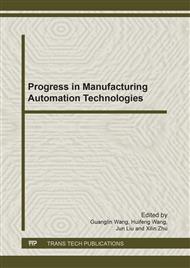p.274
p.279
p.283
p.287
p.291
p.296
p.300
p.306
p.311
Monte Carlo Simulation of Morphology Evolution of Machined Surface
Abstract:
Monte Carlo (MC) method is adopted to simulate the morphology evolution of machined surface. One specimen is first scratched in MD simulation, and then the machined surface is used in MC simulation. It is found that the atoms stacking on both sides of the groove in the process of nanoscratching have relative obvious migration with time, because these atoms are in high energy, unstable status. The atoms are moved to the minimum energy position by repeated Markov moves. These atoms have an average one-atom-high migration, so quality of machined surface is definitely influenced by the factor of time. To simulate morphology of machined surface by MC simulation is both practical and meaningful.
Info:
Periodical:
Pages:
291-295
Citation:
Online since:
July 2011
Authors:
Price:
Сopyright:
© 2011 Trans Tech Publications Ltd. All Rights Reserved
Share:
Citation:


